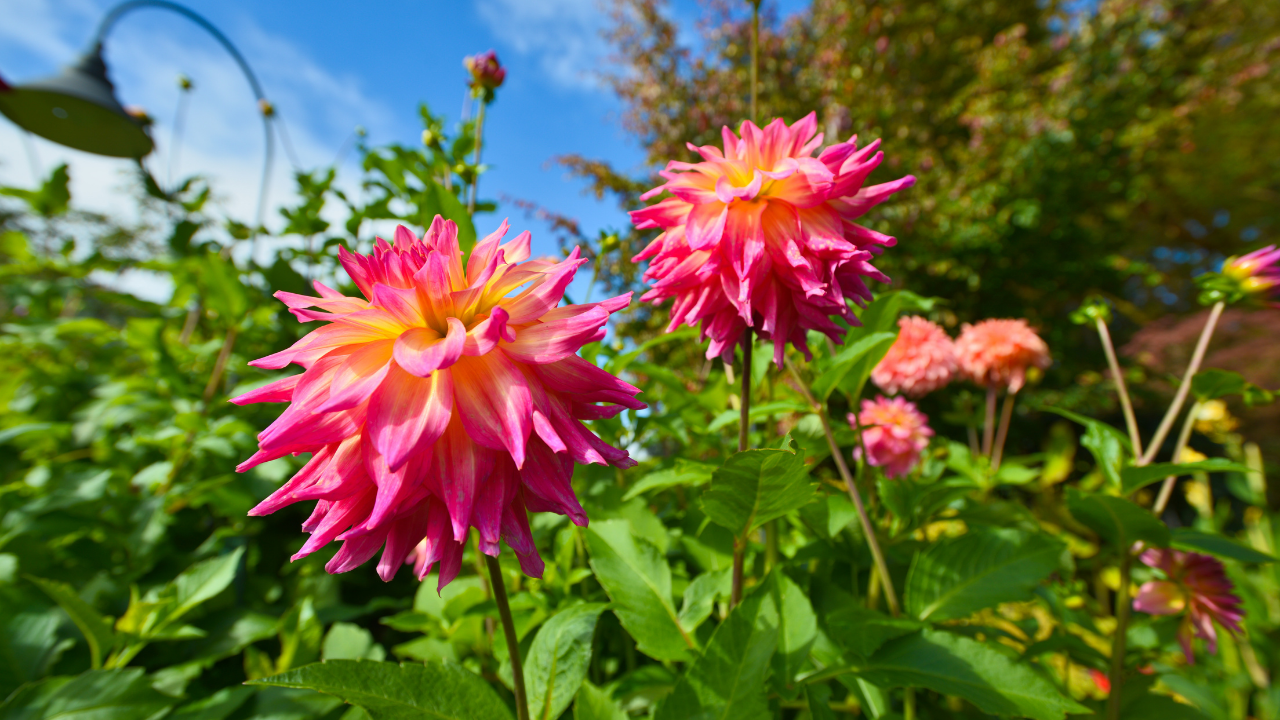
Wildflower gardens with beautiful meadow patches are becoming more popular these days. Wildflowers are usually started from seeds which is surely the most cost-effective option. It’s also a fairly easy way to grow a wide range of different wildflowers. If you’d like to learn more about growing wildflowers in the spring or summer, take a look at our useful guide.
When to Plant Wildflowers in Your Area

When planting and sowing wildflowers, you should consider the climate your live in and the requirements of the species you want to sow.
First, you should get info on what types of wildflowers you can grow successfully in your area. Choose wildflowers that are appropriated for your region and climate.
Next, you should consider the specific needs of certain wildflower seeds. Some seeds need to be frozen for several months, while some need to be baked in the sun before going dormant. Some seeds in the bean and mellow family need physical scarification in order to break the strong seed coat.
But, don’t worry, these requirements are usually labeled and explained on a seed package and are easy to follow. The information on the sowing season and the germination time is labeled on these packages as well.
Generally, you can sow wildflowers seeds in early spring or in the fall, although the fall sowing is usually recommended, especially in the cooler climates where the soil freezes during the winter. Starting wildflower seeds in the fall is recommended for two reasons.
First, the seeds sown in the fall produce stronger plants. Second, the fall sowing is related to the natural life cycle of wildflowers.
When sowing wildflowers, the best practice is mimicking mother nature. In nature, wildflowers produce seeds in summer. The seeds are dispersed (by wind, birds, animals, etc.) in the late summer and fall. The new cycle begins when these seeds fall to the ground, waiting for optimal conditions for germination. This usually happens in spring, but with some species, the germination can start early in the winter.
In order to germinate, seeds need warmth and water, while some seeds (usually very small seeds) need light. When the right conditions happen, the seeds will germinate.
For fall planting, the most important thing is to sow wildflower seeds in the right time. If you sow too early, the warm weather can make your seeds germinate in the wrong season. The seeds planted in the fall should stay dormant until the spring arrives.
In the areas where the soil doesn’t freeze, the fall planting should be done just before your rainiest season begins. This way, the weather won’t be too hot for baby plants.
If you decide on spring wildflower sowing, be careful if you live in the cooler climate with harsh winters and regular freezing temperatures. In this case, sow your wildflowers after the average last frost date in your area and when the soil gets warmer. Most of the seeds won’t germinate if the soil temperatures are below 55℉. A sudden late frost in the spring can kill off the sprouts, so don’t plant them too early.
Site Preparation for Wildflowers Seeds
The best way to sow wildflower seeds is by planting directly onto the ground. Some wildflowers seeds don’t handle transplantation very well, so sow them to their permanent place. Remember, you’d like to mimic nature, so try to keep things simple.
First, determine the right spot for your wildflowers depending on their growing requirements. Does your wildflower need acidic or alkaline soil? Does it grow in a low-light environment or it prefers full light? Which companion plants would be suitable for your wildflowers?
After you determine the right site for your wildflowers, work the soil thoroughly before sowing the seeds. Remove any weed or undesirable plants to create a clear, weed-free soil for your new plants. If you’re introducing a non-native species, it could be easily out-competed with domestic, native species, so weed control is really a critical factor.
Most of the wildflowers species prefer poor soil and they don’t require fertilizers.
Sowing Wildflower Seeds and Pressing them Into the Soil

As mentioned above, wildflower seeds are dispersed by the wind or animals. The best way to sow them is to scatter them by hand randomly, mimicking the natural process. If you work with smaller areas, you can try to disperse them evenly.
Another useful method for seed application is by using a sand mixture. Mix your wildflowers seeds with sand and scatter the mixture onto the soil.
After sowing the seeds, you don’t need to cover them with the soil (unless the label on a seed package says the opposite). Instead, just press the seeds into the soil. This will ensure better germination.
Watering Wildflower Seeds
In order to germinate, seeds need moisture. If you’re planting in the spring, maintain a regular watering schedule, and if the weather is extremely dry, water your seeds more often.
If you’re planting in the fall in the areas where the soil freezes, you don’t want your seeds to germinate but to go dormant. Generally, winter and fall plantings don’t need watering.
Watch Your Wildflowers Grow
Once your wildflowers have germinated, you can watch them grow and develop blossoms. Annual flowers will sprout faster than perennials. Some perennial species will need several seasons to establish a flowering meadow.
However, your work here is not done. During their initial period, your wildflowers will need a lot of care. Constant weed control and occasional reseeding are essential in growing wildflowers, so be patient and your wildflower garden will reward you with its wonderful blossoms.
CTTO: Wilderness Tamed



